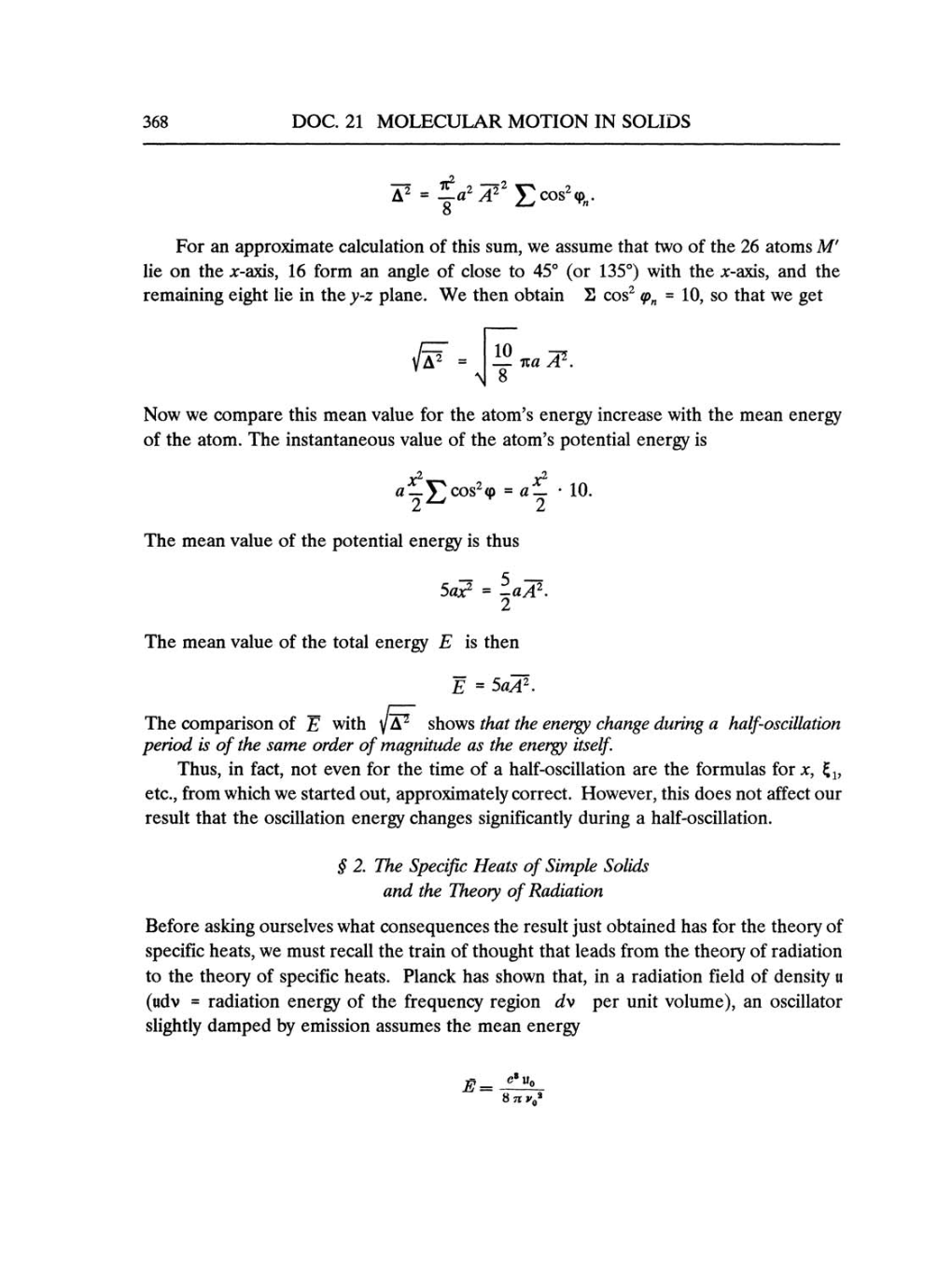368
DOC.
21
MOLECULAR MOTION IN
SOLIDS
A2
=
ja2
A22 Is2P".
For
an
approximate
calculation
of
this
sum, we assume
that
two
of the
26 atoms
M'
lie
on
the
x-axis,
16
form
an angle
of
close to
45° (or
135°)
with
the
x-axis,
and
the
remaining eight
lie in
the
y-z
plane.
We then obtain
53
cos2
pn
=
10, so
that
we
get
A2
=
108
a
A2.
Now
we compare
this
mean
value
for the
atom's
energy
increase
with
the
mean energy
of the
atom.
The
instantaneous value
of
the
atom's
potential
energy
is
a-T
cos2p =
a-
•
10.
2 2
The
mean
value
of the
potential energy is
thus
Sajc2
=
\aA2.2
The
mean
value
of the total
energy
E
is
then
E
=
5aÄ*.
The
comparison
of E
with
/ä5
shows
that
the
energy
change during a half-oscillation
period is
of the
same
order of
magnitude
as
the
energy itself.
Thus,
in
fact,
not
even
for the time of
a
half-oscillation
are
the formulas for
x,
£1;
etc.,
from which
we
started
out, approximately
correct.
However,
this
does
not affect
our
result that the
oscillation
energy
changes significantly
during
a
half-oscillation.
§ 2.
The
Specific
Heats
of
Simple
Solids
and
the
Theory
of
Radiation
Before
asking
ourselves what
consequences
the result
just
obtained
has
for the
theory
of
specific
heats,
we
must recall
the
train of
thought
that
leads from
the
theory
of radiation
to
the
theory
of
specific
heats. Planck
has shown
that,
in
a
radiation
field
of
density u
(udv
=
radiation
energy
of the
frequency region
dv
per
unit
volume), an
oscillator
slightly
damped
by
emission
assumes
the
mean
energy
C*Uq
8
n
v"%
